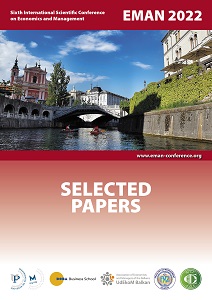Preconditions of Wine Tourism Development in Slovenia and the Czech Republic – Selected Aspects
Preconditions of Wine Tourism Development in Slovenia and the Czech Republic – Selected Aspects
Author(s): Patrik Kubát, Simon Kerma
Subject(s): Social Sciences, Economy
Published by: Udruženje ekonomista i menadžera Balkana
Keywords: Wine tourism development; Old World wine regions; Wine destination; Heritage; Traditions
Summary/Abstract: Wine tourism is considered to be niche tourism. The synergy of tourism and viticulture, which has become a significant phenomenon, is the focus of interest not only in European countries but also in other parts of the world. Old World wine regions have been inspired by the recognized and remarkable practices of New World wine producers. Two small wine producing countries, Slovenia and the Czech Republic were chosen for a study of tourism concerning grape growing and wine production. The countries appear to be very similar and share many similarities, for instance, in wine tourism development, and wine production tradition but also with the size of the vineyard area. However, these two countries are not renowned as leading wine producers. This, therefore, is a problem when endeavoring to attract potential visitors, customers, and the public in general. This paper focuses on introducing the above countries as wine destinations and illustrating their common characteristics. Methods such as description and comparison are presented to show the trends and strategies used to sustain wine tourism in small wine countries. Slovenia and the Czech Republic are countries with a long winemaking tradition. Drinking wine or wine tasting is seen by wine visitors as a social activity, often accompanied by authentic local food amid rural surroundings and natural landscapes. Above all, this paper draws attention to two small wine-producing countries.
Book: EMAN 2022 / 6 – Economics & Management: How to Cope with Disrupted Times - SELECTED PAPERS
- Page Range: 135-143
- Page Count: 10
- Publication Year: 2022
- Language: English
- Content File-PDF

